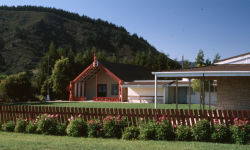[{"id":8237,"order":0,"imagePath":"https://admin.ezystream.com/static/images/article/c0383870-c51f-4c38-a1af-0bb95e35efcc.png","type":"image","content":"https://admin.ezystream.com/static/images/article/c0383870-c51f-4c38-a1af-0bb95e35efcc.png"},{"id":8238,"order":1,"contentText":"Pat Preest was the first woman ordained by the Baptist Union of New Zealand and served as a hospital chaplain. u201cBecause my Lord Jesus Christ said u2018Follow thou me.u2019
Patricia Eunice Preest was born into a Baptist family. She initially trained in Auckland as a registered nurse. Later, she studied for two years at the Bible Training Institute (now known as Laidlaw College). Then when a Deaconess programme was established at Baptist College (later Carey Baptist College) in 1956, she was among the first entrants into that programme. She wrote: u201cWhy a deaconess? Because there are numerous small causes crying out for leadership. Why a deaconess? Because ministers of big churches are overtaxed with work. Why a deaconess? Because my Lord Jesus Christ said, u2018Follow thou me.u2019 u201d
","type":"text"},{"id":8239,"order":2,"imagePath":"https://admin.ezystream.com/static/images/article/7e3325b8-7564-44c2-94f8-6eca5ffbca85.png","type":"image","content":"https://admin.ezystream.com/static/images/article/7e3325b8-7564-44c2-94f8-6eca5ffbca85.png"},{"id":8240,"order":3,"contentText":"Baptist College, 1957. Photo From Sutherland, Martin Paul, and Laurie Guy. An Unfolding Story: A History of Carey Baptist College. Archer Press. 2014. P118.
The academic programme for deaconesses was apparently identical to the normal ministry programme open to men, but the practical elements were to be focussed on pastoral care, women and children. Pat did her probationary years with Hastings Baptist Church, and became fully accredited in 1959.
She then took up a pastoral role with the then Corstophine Baptist Church, a small church on the southern side of Dunedin where she served from 1960 to 1964. While Pat was here the church grew in numbers and spirituality, according to a comment in the Baptist in 1962. For several months there was no senior pastor and Pat was the constant leader with a number of others filling in with preaching. When she left in 1964 people commented on her qualities of courage, determination, faithfulness and humility.
When Pat left from there, she took clinical pastoral training in Dunedin and then travelled overseas for a while before becoming for a few years the Matron of Aranui rest home in Mt Albert, Auckland. While there she was asked to become a member of the Baptist Social Services Board in 1967. In all she did 16 years as a deaconess.
In 1971 Pat returned to Baptist College for ministerial training, a course now open to her. Her ordination as Reverend Patricia Preest, was a significant moment for her and for New Zealand Baptists, and was noted with appreciation in the Presidentu2019s Report at the Baptist Annual Assembly in November 1973. Interviewed at that time, Pat said that she was not a u2018womanu2019s libberu2019. She said instead, u2018It is something God has directed me into. For this reason only, I have followed.u2019
As it happened, no full-time church ministerial job ever eventuated, though she did serve for a while at some point as an interim minister at North Memorial church in Remuera, Auckland; and late in her working life, Pat worked as a part-time Assistant Pastor in North East Valley in Dunedin.
But after ordination, perhaps while waiting for a call from a church, she took an interim job as a chaplain at Dunedin Hospital. Then within the year she was inducted as the ecumenical chaplain at Hastings Hospital, Hawkes Bay in July 1974. This too was breaking new ground as a woman and as a Baptist. Her induction started with a hymn that may have been carefully chosen by Pat.
God of grace and God of glory
On Thy people pour Thy power
Crown Thine ancient churchu2019s story
Bring her bud to glorious flower
Grant us wisdom, grant us courage
For the facing of this hour
For the facing of this hour
Again interviewed, Pat spoke warmly of the work of hospital chaplaincy. She called a hospital a parish within a building and described how in her work she would minister to patients, relatives and staff.
u2018Where there is a crisisu2014and hospital is a crisisu2014people stop and wonder in a vague way where God fits into all this,u2019 she explained. u2018I donu2019t see chaplaincy simply for people who are dying, but also for people who are facing up to life and its challenges. Often when a person is admitted to hospital, the family feels confused and lost about what is going on. The chaplain can bring a personal touch. This is what Jesus himself did.u2019
People questioned her about being a Baptist woman ordained and becoming a registered hospital chaplain, asking how Baptists reacted to her. Patu2019s did not feel the theoretical questions as much as people expected. Her reply, not looking for controversy, was warm and understanding. u2018People have been most accepting. Some have reservations about a woman minister and I accept that.u2019 But, she notes: u2018I regard women and men as equals. I see a place for contributions by both men and women in society as well as in church life. I see no reason for women to have a special part in the church just for the sake of it. If a person has a particular gift or talent, it should be used, irrespective of sex.u2019
She went on, u2018It is being recognised that women do have a contribution to make as far as Christian things are concerned. They have always made a contribution but not been very vocal about it.
u2018I see evangelism as the task of every Christian. Ministers perhaps have more responsibility in that they are set aside by the church, called by God and given the time and training in this specific task. But a ministeru2019s role is as leader, and not as sole evangelist.u2019
Pat remained in that chaplaincy role until late in 1981. when she moved to Auckland. While little is known about her life at this time, we do know she had a role on the Social Services Board, and also was listed as a Baptist marriage celebrant from 1983 to 2004.
After her death on 21st August 2014, her friend Sheila Pritchard commented about her: u201cPat was an unobtrusive person who mentored and supported others in more public roles. u2026 She was a valued member of the congregations she belonged to and quietly introduced contemplative ways of prayer where she could. She was always eager to learn and to read. u2026 She always dressed well and wore discreet makeup. That may sound an odd thing to value about her but I thought at the time that she kept her dignity and didnu2019t slump into u201cnot botheringu201d.
Sources:
New Zealand Baptist, Nov 1955, Oct. 57, Oct. 1959, Sept 1960, 1971 (p. 81), 13 July, 1974, 1975 (27), 1977, 1978, and some Baptist Historical Society records.
Sutherland, Martin Paul, and Laurie Guy. An Unfolding Story: A History of Carey Baptist College. Archer Press. 2014. P117-118.
Pritchard, Sheila. u201cCommunion at the typewriteru201d. http://sheilapritchard.blogspot.com/2017/11/
Preest, Patricia Eunice; https://www.gazette.govt.nz/
Patricia Preest; https://www.aucklandcouncil.govt.nz/cemeteries/Pages/find-burial-cremation.aspx
","type":"text"}] Women’s History Month: Pat Preest 1928-2014
Stories
Robust Leadership, Baptist Women New Zealand | Beulah Wood | 01 February 2021
- Syntax error, malformed JSON
Read More Articles
Register now for Hui ā Māori 2024: ‘no greater time to be unified’
A call for Baptist Māori to engage with the significant kōrero coming to Hui ā Māori 2024.
Reflections on the season of Matariki
Three Baptist Māori share what they’ll be doing to acknowledge this season.
Are our social support services making a difference?
Transactional or transformational support: what services should our local church aim for to empower our communities?


